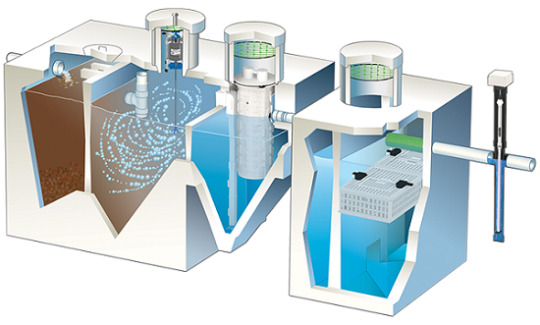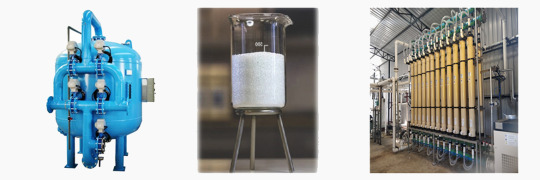#Recycling & Recovery
Text
You don't have to be positive all the time to become better.
You don't have to do things right all the time to become better.
You don't have to be enough all the time to become better.
You don't have to be strong all the time to become better.
There will be days when you feel pessimistic about everything.
There will be days when you feel like you lost all your progress.
There will be days when you break down.
There will be days when nothing you've ever done will feel even near enough.
But that's just how it goes. Those days are signs that things are changing for the better. So after those days, persist. I know you can.
#healing#recovery#self growth#self healing#self improvement#self worth#mental wellbeing#self care#mental health#mental wellness#recycled post#qeued post
154 notes
·
View notes
Text
Recovery of solid waste from India for recycling purposes
Recovery of solid waste from India for recycling
#Solidwaste #recycling #Wastemarket #India
Solid waste recovery from India
India is known as one of the powerhouses of the Asian market, with industrial growth. The generation of waste is also steadily increasing and rising. Hence, we need to get ready to combat the growth of waste in a humungous manner.
Plastic Waste
During 2019-2020, India generated approximately 25,940 tonnes of plastic waste on a daily scale. The market of India…

View On WordPress
0 notes
Text
Learn essential waste management practices for chemical manufacturing from A-Gas Electronic Materials. This guide covers waste minimisation, segregation, recycling, safe storage, and compliance. Enhance sustainability and efficiency in your operations.
#waste management#chemical manufacturing#waste minimisation#waste segregation#recycling#safe storage#regulatory compliance#hazardous waste#solvent recovery#A-Gas Electronic Materials#UK#sustainability#industrial waste#chemical waste disposal#waste treatment#environmental regulations
0 notes
Text
From Old to Gold
Curbside Swap events
Saskatoon hosts annual events “Curbside Swaps” on the first Saturday in June = June 1, 2024 and the second Saturday in September =September 14, 2024, allowing residents to place “free” signs on their unwanted items, including appliances, bicycles, tools, furniture, and more. It’s an opportunity to declutter responsibly while contributing to a culture of sharing within the…

View On WordPress
#106100594#5 R&039;s#Action on climate change.#appliances#Bicycles#books#Building material#CDs#Charitable tax receipt#clothes#commitment to the environment#Computers#CWL Clothing depot#drop and go#DVDs#Electronics#Free goods#Friends of the Saskatoon Afforestation Areas#Friends of the Saskatoon Afforstation Areas#Furniture#George Genereux Urban REgional Park#Global Recycling Day#Kitchen utensils#Laundering clothing#Materials Recovery Centre#MissionThrift#movies#MRC#Musical instruments#plants
0 notes
Text
Aquarius Projects - Tertiary, Recycling & Recovery. Pressure Sand Filters, Ultrafiltration, Membranes & More. Call Now!
#recycling and recovery systems for water waster management plant#tertiary And recycling and recovery equipments in india#pressure sand filters in gujarat#ultra filtration system in vadodara#ceramic membrane system in gujarat
0 notes
Text
Revolution In Recycling: 5 Breakthroughs

Plastic Revolution: 5 Innovative Technologies Reshaping Our Approach to Waste
Plastic waste poses a monumental environmental challenge, with over 350 million metric tons produced annually and projections of tripling by 2060. Urging a shift in policies and consumption habits, technology emerges as a beacon of hope in combating this crisis. Innovative solutions include chemical recycling methods and digital innovations promoting plastic circularity. Pioneering companies and startups champion these technologies, reducing environmental footprints and promoting a sustainable, plastic-free future.
The Rise of Plastic Pollution
The rise of plastic as a symbol of modern convenience in the early 20th century led to a revolution in manufacturing and packaging, but it also sparked an environmental crisis. Today, plastic waste poses a profound and far-reaching impact, with vast quantities ending up in landfills or oceans, harming marine life and ecosystems. Despite growing awareness and technological advancements, the global plastic recycling rate remains alarmingly low.
The inefficiency in plastic recycling exacerbates environmental pollution, urging an urgent rethink of our relationship with this material. Plastic pollution has escalated into a global emergency, with millions of tons of plastic waste escaping waste management processes annually, polluting aquatic ecosystems and threatening biodiversity and human health. Addressing this crisis requires a fundamental shift in how we produce, use, and dispose of plastic, emphasizing the importance of reducing plastic production and developing alternative materials alongside enhancing recycling rates and waste management infrastructure.
Pioneering Technologies in Plastic Recycling
Pioneering plastic recycling tech offers hope amid environmental challenges. From chemical processes to digital innovations, diverse methods aim for circular plastic use, aided by cutting-edge research.
Chemical Recycling
Chemical recycling processes like pyrolysis and gasification break down plastic waste into its molecular components, offering a pathway to restore plastics to their original quality. Pyrolysis converts plastic into synthetic crude oil, which can be refined into fuels or new plastics, while gasification produces synthesis gas for power generation or chemical production. Despite the benefits of reducing landfill use and conserving resources, challenges such as high operational costs and infrastructure needs hinder widespread adoption. Overcoming these hurdles requires policy backing, cost-reducing advancements, and fostering demand for recycled products.
Digital Innovations for Circularity
Digital innovations, such as HolyGrail 2.0's use of digital watermarks on packaging, enhance plastic recycling by enabling more accurate sorting. These imperceptible marks carry detailed packaging information, improving sorting accuracy and recycled material quality. Additionally, AI and simulation tools identify production and recycling inefficiencies, paving the way for more sustainable practices and a transition to a circular economy.
Cutting-edge Methods by Research Institutions
Research institutions like Oak Ridge National Laboratory (ORNL) lead the way in developing innovative recycling methods, such as their efficient organocatalyst for converting mixed plastic waste into valuable chemicals. ORNL's technology holds promise for achieving closed-loop circularity in plastics, offering a low-energy, low-carbon alternative to traditional recycling.
The advancements in chemical recycling, digital innovations, and research initiatives signal a transformative shift in plastic waste management, with the potential to drastically reduce pollution and align with sustainability goals. Moving forward, a combination of technological progress and strategic policy measures will be essential in realizing a circular plastic economy, where every piece of plastic is valued and waste is minimized.
Spotlight on Change-Makers
In the burgeoning field of plastic waste management, a mix of established corporations and innovative startups are pioneering technologies that promise to revolutionize how we recycle and reduce plastic pollution. These change-makers are not just contributing through technological innovation but are also shaping a sustainable future through their commitment to environmental stewardship.
Company Profiles
Sealed Air and Chevron Phillips Chemical are pioneering sustainability in packaging through advanced recycling technologies. Sealed Air focuses on chemical methods like pyrolysis to convert challenging plastics into valuable resources, advancing the circular economy. Meanwhile, Chevron Phillips Chemical invests significantly in pyrolysis technology, aiming to enhance recycling efficiency and reduce reliance on virgin materials, showcasing a dedication to innovation for sustainability.
Innovative Startups
Re-Du, a startup from Oak Ridge National Laboratory, pioneers plastic recycling by converting mixed waste into valuable chemicals. Their focus on chemical transformation highlights innovation and entrepreneurship in the environmental sector, bridging scientific research with impactful solutions.
The contributions of companies like Sealed Air and Chevron Phillips Chemical, alongside the pioneering efforts of startups like Re-Du, highlight the diverse landscape of initiatives to combat the plastic waste crisis.
These innovators drive sustainable tech, vital for a circular plastic economy, showcasing the power of innovation in combating environmental threats.
Challenges and Opportunities
Scaling up innovative tech to combat plastic pollution faces hurdles like high costs and regulatory complexities. Addressing these challenges demands affordable solutions, evolved policy frameworks, and closer collaboration across sectors.
However, these challenges breed opportunities for innovation and collaboration. They spur the development of cost-effective recycling tech, prompt policy evolution for sustainable waste management, and drive breakthroughs in recycling and alternative materials.
Concluding Thoughts Toward a Plastic-Free Future
The global impact of the widespread adoption of advanced plastic recycling and reduction technologies could be transformative. A world where plastic no longer pollutes our oceans endangers wildlife, or contributes to climate change is within reach. Achieving this vision requires a multi-faceted approach that includes technological innovation, policy reform, corporate social responsibility, and individual action.
Policymakers must craft regulations that incentivize recycling and sustainable production. Companies should commit to using recycled materials and designing products with end-of-life recovery in mind. Individuals can contribute by reducing plastic use and supporting environmentally responsible brands.
This collective effort towards a plastic-free future necessitates continued innovation, investment, and collaboration. As we move forward, let us all play our part in this critical fight against plastic pollution, aspiring for a cleaner, healthier planet for future generations. Let this be our call to action: to innovate, invest, and unite to turn the tide against plastic waste.
#plastic waste management#innovations in plastic recycling#impacts of plastic pollution#plastic recycling#recycling sustainable waste recovery#plastic waste
0 notes
Text
love love love when somehow my reshade presets folder somehow gets deleted, ive been offline for the whole month basically and i come back and shit has mysteriously disappeared
anyway, um, if you have any preset recommendations, im all ears
#i have a specific folder for sims stuff like spreadsheets and its where hoodchecker lives and all that jazz#and the preset folder i kept in there is straight up disappeared and i *just* emptied my recycling bin too so thats just gone gone#(i am too lazy to get that recovery thing)
0 notes
Text
Water and Wastewater Treatment Equipment Market, Analyzing Market Forces, Technological Advancements, and Environmental Impacts
The global water and wastewater treatment equipment market size is anticipated to reach USD 90.0 billion by 2030, registering a CAGR of 4.6% over the forecast period, according to a new report by Grand View Research, Inc. The market is driven by increasing demand for clean and safe water in both developed and emerging economies. This is due to growing concerns over water pollution and scarcity, and the need for effective wastewater management.

Water And Wastewater Treatment Equipment Market Report Highlights
Asia Pacific accounted for the largest revenue share of the global market in 2023, accounting for 35.1%, and is expected to maintain its dominance throughout the forecast period. This can be attributed to the presence of a strong consumer base that has led to significant demand for water and wastewater treatment equipment
By application, the municipal segment dominated the market with a revenue share of 66.0% in 2023. The increasing initiatives undertaken by governments, strict environmental regulations, and increasing awareness regarding water treatment are some of the factors contributing to the growth of the municipal segment over the forecast period
By process, the tertiary treatment segment dominated the market with a revenue share of 44.2% in 2023. Some of the drivers for the increasing demand for tertiary wastewater treatment are environmental protection, water scarcity, and the increasing demand for clean water. As these issues continue to be major concerns across the world, the demand for tertiary wastewater treatment is expected to grow over the forecast period
Major key players frequently engage in mergers & acquisitions and new product launches to maintain their market shares. For instance, in March 2022, Pentair plc, announced the definitive agreement to acquire Manitowoc Ice. The move was taken by the company to enhance its commercial water solutions platform and cater to the demand from the food service industry
For More Details or Sample Copy please visit link @: Water And Wastewater Treatment Equipment Market Report
Furthermore, the demand for decentralized wastewater treatment systems is expected to increase over the projected period, as these systems offer several advantages such as low operating costs, high treatment efficiency, and easy maintenance. Several companies are focusing on developing innovative decentralized wastewater treatment systems that can be easily installed in residential and commercial buildings.
Population growth, urbanization, increasing industrialization, and the need for clean water for various purposes such as drinking, agriculture, and industrial processes all drive demand for water and wastewater treatment equipment. Government regulations aimed at protecting the environment and ensuring public health also have an impact on the demand for water and wastewater treatment equipment.
The market players are constantly undertaking strategic initiatives such as mergers, acquisitions, partnerships, and new product launches to gain a competitive advantage. For instance, Ceco Environmental, a provider of air pollution control solutions, announced the acquisition of Compass Water Solutions, a provider of water and wastewater treatment equipment. The acquisition will enable Ceco Environmental to integrate Compass Water Solutions’ critical engineered solutions with its industrial water capabilities.
WaterAndWastewaterTreatmentEquipmentMarket #WaterAndWastewaterTreatmentEquipment #WaterTreatment #WastewaterManagement #EnvironmentalEngineering #SustainableTechnology #CleanWaterSolutions #IndustrialWaterTreatment #WaterPurification #GreenInfrastructure #InnovationInWaterManagement #WaterQualityControl #WastewaterRecycling #MarketTrends #EnvironmentalCompliance #SmartWaterTechnologies #RegulatoryFrameworks #EcoFriendlySolutions #EmergingTechnologies #ResourceRecovery
#Water and Wastewater Treatment Equipment Market#Water and Wastewater Treatment Equipment#Water Treatment#Waste water Management#Environmental Engineering#Sustainable Technology#Clean Water Solutions#Industrial Water Treatment#Water Purification#Global Market Analysis#Green Infrastructure#Innovation In Water Management#Water Quality Control#Waste-water Recycling#Environmental Compliance#Smart Water Technologies#Regulatory Frameworks#Eco-Friendly Solutions#Emerging Technologies#Resource Recovery
0 notes
Text
Usage of Waste Heat Recovery Systems Set to Surge in North American Industries in Future
Waste heat recovery basically involves capturing and reusing waste heat for various purposes and applications such as combustion air preheating, steam generation, load preheating, space heating, water preheating, and power generation. Waste heat is produced in several industrial processes. Cooling water from furnaces, exhausts from glass melting furnaces, combustion engines, cement kiln,…

View On WordPress
#Efficiency Improvements#Energy Recycling#Environmental Benefits#Heat Recovery Innovations#Industrial Processes#Market Players#market trends#Sustainable Solutions#Waste Heat Recovery
0 notes
Link
Uniek ontwerpproject afgerond naar volledige klanttevredenheid. Klant wenste een modern, dynamisch en efficiënt design, dat zijn merkwaarden sterker zou vertolken. Ontdek het doordachte ontwerpproces, geinspireerd door klant's visie en onze creatieve inbreng. Lees meer over dit fascinerende project.
#Golf Square International#Social Media Templates#Brand Adaptation#Golf Course Innovations#Lost Golf Ball Recovery#Recycling Initiatives#Eco-friendly Golf#Typography Design#Real Photo Implementation#Dutch Design
0 notes
Text
Efficient IT Liquidation Services for Businesses
Introduction
In today's fast-paced business world, technology is constantly evolving, making it imperative for companies to stay up to date with the latest IT equipment. However, this constant upgrade cycle often leaves businesses with surplus or outdated IT assets. To effectively manage these assets and recover value from them, businesses turn to IT asset liquidation services. In this comprehensive guide, we will explore the world of IT asset liquidation, from its benefits and the process involved to the role of IT liquidation companies.

Understanding IT Asset Liquidation
What is IT Asset Liquidation?
IT asset liquidation is the process of strategically selling or disposing of surplus, obsolete, or outdated IT equipment and assets. This can include computers, servers, laptops, networking hardware, and more.
Why is IT Asset Liquidation Necessary?
IT asset liquidation is crucial for several reasons:
Cost Savings: Upgrading and maintaining old IT equipment can be costly. Liquidating surplus assets can offset these expenses.
Data Security: Proper IT asset disposal ensures that sensitive data is securely wiped or destroyed to prevent data breaches.
Environmental Responsibility: Responsible disposal and recycling of IT equipment contribute to sustainability efforts.
Benefits of IT Asset Liquidation
Cost Recovery
Efficient IT asset liquidation allows businesses to recover a portion of their original investment. This recovered capital can be reinvested in new technology or used to offset expenses.
Data Security
Data breaches can have severe consequences. IT asset liquidation ensures that all data is securely wiped or destroyed, protecting your company and clients.
Compliance with Regulations
Many industries are subject to strict data disposal regulations. IT asset liquidation services ensure compliance with these regulations, reducing legal risks.
Environmental Responsibility
Recycling and proper disposal of IT equipment reduce electronic waste and minimize your company's environmental footprint.

The IT Asset Liquidation Process
Asset Identification
The first step in IT asset liquidation is identifying the equipment that needs to be liquidated. This involves creating an inventory of all IT assets, including their age, condition, and specifications.
Data Sanitization
Before disposing of any IT equipment, all data must be securely wiped or destroyed to prevent data breaches. This is a critical step in the process.
Asset Valuation
An appraisal of the IT assets is conducted to determine their current market value. This valuation helps in setting realistic expectations for the proceeds of the liquidation.
Resale, Recycling, or Disposal
Depending on the condition of the assets, they can be resold, recycled, or disposed of responsibly. Resale brings the highest returns while recycling and disposal adhere to environmental standards.
Documentation and Reporting
Detailed records of the IT asset liquidation process are essential. This includes certificates of data destruction, asset disposal records, and financial reports.
Choosing the Right IT Liquidation Company
Expertise and Experience
Look for IT liquidation companies with a proven track record and experience in managing IT asset disposal.
Data Security Measures
Ensure the company has robust data security protocols in place to protect sensitive information during the disposal process.
Environmental Responsibility
Choose a company committed to environmentally responsible IT equipment recycling and disposal.
Transparent Reporting
The company should provide transparent reporting throughout the liquidation process, including asset valuation and proceeds distribution.
Conclusion
Efficient IT asset liquidation is an essential practice for businesses looking to stay competitive while managing their IT assets responsibly. By partnering with the right IT liquidation company, you can maximize cost recovery, ensure data security, and contribute to environmental sustainability. Embrace IT asset management as a strategic component of your business strategy, and reap the benefits of efficient IT asset liquidation.
Read More:-
#IT Liquidation#IT asset liquidation#IT equipment disposal#IT asset management#IT asset recovery#IT disposal services#IT liquidation companies#IT recycling and disposal#IT asset disposition#Benefits of IT liquidation#IT liquidation process
0 notes
Text
Unveiling Creative Ways to Repurpose Everyday Items
Global Recycling Day, celebrated annually on March 18, is a global initiative that highlights the importance of recycling and encourages individuals, communities, and businesses to contribute to sustainable waste management practices. The day emphasizes the 5 R’s—Refuse, Reduce, Reuse, Repurpose, and Recycle—as essential principles for creating a more sustainable and circular economy.
Refuse,…

View On WordPress
#106100594#5 R&039;s#Action on climate change.#appliances#Bicycles#books#Building material#CDs#Charitable tax receipt#clothes#commitment to the environment#Computers#CWL Clothing depot#drop and go#DVDs#Electronics#Free goods#Friends of the Saskatoon Afforestation Areas#Furniture#George Genereux Urban REgional Park#Global Recycling Day#Kitchen utensils#Laundering clothing#Materials Recovery Centre#MissionThrift#movies#MRC#Musical instruments#plants#Potted trees
0 notes
Text
Aquarius Projects | Sustainable Recycling & Recovery Systems
Aquarius Projects offers water treatment recycling & recovery systems aiming to minimize waste, maximize resources & promote sustainability through solutions

#recycling and recovery systems for water waster management plant#tertiary And recycling and recovery equipments in india#pressure sand filters in gujarat#ultra filtration system in vadodara#ceramic membrane system in gujarat#activated carbon filters in india
0 notes
Text
The Importance of Secure IT Asset Disposal
In today’s digital age, organizations rely heavily on technology for their day-to-day operations. As a result, the need for upgrading and replacing IT equipment is a common occurrence. However, what often goes overlooked is the proper disposal of these outdated IT assets. Secure IT asset disposal is not just a best practice; it’s a crucial step in ensuring data security, environmental responsibility, and regulatory compliance. In this article, we will delve into the significance of secure IT asset disposal and explore the benefits it offers to organizations.

1. Understanding Secure IT Asset Disposal
Secure IT asset disposal encompasses the proper disposal, recycling, or repurposing of IT equipment like computers, servers, printers, and other electronic devices. It is a comprehensive process that focuses on data security, environmental sustainability, and legal compliance.
2. The Role of IT Asset Disposal Companies
IT asset disposal companies specialize in managing the end-of-life cycle of IT equipment. They employ industry best practices to ensure that sensitive data is securely wiped or destroyed and that electronic waste is recycled responsibly.
3. IT Equipment Disposal Services
Secure IT asset disposal services encompass a range of activities, including data erasure, data destruction, asset tracking, and responsible recycling. These services help organizations avoid data breaches and ensure compliance with data protection regulations.
4. Benefits of IT Asset Disposal
a. Data Security: One of the primary reasons for secure IT asset disposal is to protect sensitive information. Improper disposal can lead to data breaches, which can be costly in terms of fines and damage to reputation.
b. Environmental Responsibility: Electronics contain hazardous materials that can harm the environment if not disposed of properly. Secure IT asset disposal ensures that e-waste is recycled or disposed of in an environmentally friendly manner.
c. Cost Savings: Proper IT asset disposal can also lead to cost savings. Reusing or reselling equipment that is still functional can generate revenue or reduce the cost of new purchases.
d. Regulatory Compliance: Many industries have specific regulations regarding the disposal of electronic equipment and data protection. Secure IT asset disposal helps organizations stay compliant with these regulations.

5. The IT Asset Disposal Process
a. Assessment: The process begins with an assessment of the organization’s IT assets, determining which equipment is ready for disposal.
b. Data Erasure: Data on the devices is securely erased using industry-standard methods, or in the case of irreparable equipment, physically destroyed to prevent data recovery.
c. Recycling: Non-functional equipment is sent for responsible recycling, ensuring that hazardous materials are disposed of safely.
d. Documentation: Proper documentation of the disposal process is essential for compliance and audit purposes.
e. Asset Recovery: When possible, IT asset recovery services can help organizations recoup some of the investment by reselling or repurposing old equipment.
6. IT Asset Management Services
In addition to disposal, IT asset management services help organizations track their IT assets throughout their lifecycle, from procurement to disposal. This improves efficiency and cost-effectiveness.
7. Developing an IT Asset Disposal Policy
Creating a clear IT asset disposal policy is essential. It should outline the steps for disposal, data handling procedures, and responsibilities within the organization.
8. The Future of IT Asset Disposal
As technology continues to evolve, the importance of secure IT asset disposal will only increase. Organizations must stay updated on best practices and regulations to ensure they are responsibly managing their IT assets.
In conclusion, secure IT asset disposal is a critical aspect of modern business operations. IT asset disposal companies and services play a vital role in helping organizations protect their data, reduce environmental impact, and stay compliant with regulations. Developing a robust IT asset disposal policy and adhering to best practices in the IT asset disposal process are essential steps for any organization looking to safeguard its interests and the environment.
Read More:-
#IT asset disposal companies#IT equipment disposal services#Secure IT asset disposal#IT disposal and recycling#IT asset management services#IT asset recovery services#IT disposal policy#IT asset disposition#Benefits of IT asset disposal#IT asset disposal process
0 notes
Text
0 notes